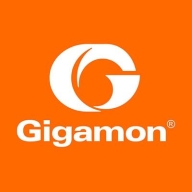

Gigamon Deep Observability Pipeline and Arista NDR compete in network security and visibility. Arista NDR seems to have the upper hand with its advanced threat detection capabilities.
Features: Gigamon Deep Observability Pipeline provides extensive network traffic visibility, enriched data, and enhanced analytics for identifying security threats. It offers comprehensive data insights that help in resolving network issues efficiently. Arista NDR supports real-time threat detection and machine learning capabilities critical for uncovering sophisticated threats and emphasizes AI-powered threat hunting and entity profiling.
Room for Improvement: Gigamon could improve its threat detection specialization and reduce false positive rates. Enhancing integration with third-party tools and providing more data visualization options could benefit users. Arista NDR can streamline its deployment process and enhance customer engagement. Offering more flexible pricing and expanding customer support capabilities are other potential improvement areas.
Ease of Deployment and Customer Service: Gigamon is noted for a user-friendly deployment model and comprehensive customer support, making it easier to implement and manage. Arista NDR offers a powerful solution but presents a more complex deployment process. The support is adequate but does not match Gigamon's responsiveness in addressing customer queries.
Pricing and ROI: Gigamon Deep Observability Pipeline has a competitive pricing model with a favorable ROI driven by effective network monitoring. While Arista NDR is priced higher, it provides substantial ROI through its advanced threat prevention, influencing choices based on budget constraints.

Arista NDR (formerly Awake Security) is the only advanced network detection and response company that delivers answers, not alerts. By combining artificial intelligence with human expertise, Arista NDR hunts for both insider and external attacker behaviors, while providing autonomous triage and response with full forensics across traditional, IoT, and cloud networks. Arista NDR delivers continuous diagnostics for the entire enterprise threat landscape, processes countless network data points, senses abnormalities or threats, and reacts if necessary—all in a matter of seconds. The Arista NDP platform stands out from traditional security because it is designed to mimic the human brain. It recognizes malicious intent and learns over time, giving defenders greater visibility and insight into what threats exist and how to respond to them.
The Advent of Advanced Network Detection and Response & Why it Matters
Gigamon Deep Observability Pipeline is a comprehensive network visibility solution that provides real-time insights into network traffic. It offers SSL inspection and mobile network monitoring for traffic monitoring purposes. The solution optimizes networks, aids in security inspection, and improves firewall performance. It is praised for its performance, power, straightforward integration, stability, and ease of initial setup.
With Gigamon, organizations can gain complete visibility into their network traffic, identify potential threats, and take proactive measures to prevent them. The solution is ideal for organizations of all sizes, including enterprises, service providers, and government agencies.
We monitor all Network Detection and Response (NDR) reviews to prevent fraudulent reviews and keep review quality high. We do not post reviews by company employees or direct competitors. We validate each review for authenticity via cross-reference with LinkedIn, and personal follow-up with the reviewer when necessary.